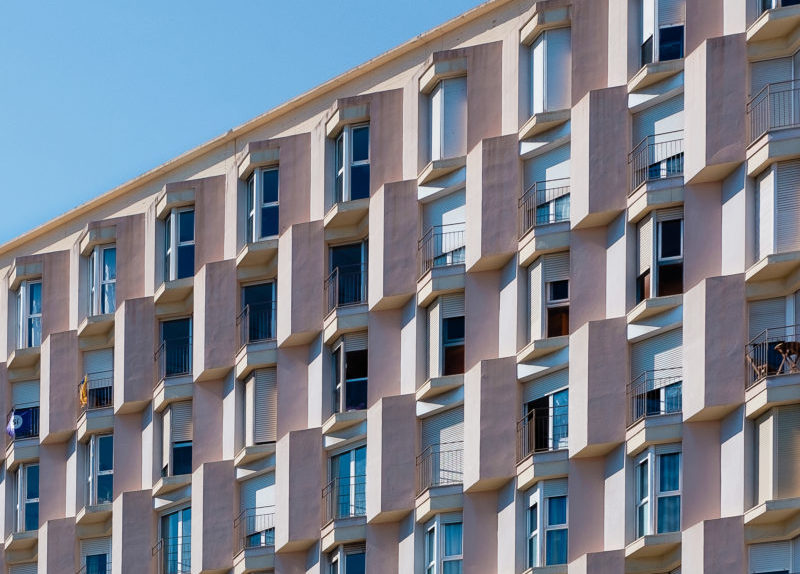Wall-to-wall and floor-to-ceiling curved screens and digital sound, state-of-the-art projection, stadium seating arrangement to ensure unobstructed viewing from anywhere in the auditorium, eye-catching architecture, cup holders on every armrest, avant-garde lobbies with studio-effect interiors, ample parking space and central air conditioning. That’s what a multiplex is all about: comfort, choice and colour. A place that not only entertains, but also retails. And by the end of 2004, Bangalore will be home to five multiplexes. And the trend has already begun. Innovative Multiplex, the city’s first, took shape only last week at Varthur on Outer Ring Road.
The Prestige Group will come up with The Forum by November this year. And the Zee Group will start operating Fun Republic at the Sigma Mall by April 2004. The other players eyeing the multiplex market in Bangalore include Shringar Films and the management of Rex Cinema. Says managing partner of Rex, Anil Kapur: “We will convert our single screen to four screens and work should start by next year. A multiplex with a total seating capacity of 1000 needs 30,000 square feet space and we have 42,000 on each floor.”
But will that lead to over-crowding? “Not really,” says Suresh Singaravelu, CEO, Prestige Estates Projects that’s aligned with Priya Village Roadshow to build The Forum, the country’s largest multiplex (11 screens; 2150 seats built over one lakh square feet of space). “In the past decade or so, about 20 cinema halls have closed down in Bangalore. And that means a loss of over 12,000 seats. With five multiplexes, the number of seats added will still be about 8,000.”
But why the delay, when India got its first multiplex in Delhi in 1997? Says A Premchand, a representative of 20th Century Fox: “No new theatres came up during this period because nobody wanted to put money into what they considered a ‘dead investment’. The entertainment tax is so high that there was no hope of recovering the money they had invested. It becomes viable only if there is no entertainment tax or if the tax is applied after the investor has recovered his money.
Now that the governments of Maharashtra, Gujarat and Rajasthan have given tax sops, many other state governments are also considering it. Elsewhere in the world, the entertainment taxes range from 10 to 15 per cent. But in India, it goes up to even 100 per cent. On a Rs 100 ticket, the theatre owner does not even get 20 per cent. The corporation taxes come in and the distributor takes a share and then maintenance costs come in. And if the government is taking so much tax they should also return it to the industry by reducing the import duties on theatre equipments and other equipments concerning the entertainment industry.”
Then again, multiplexes as a formula took shape to combat cable piracy and depleting theatre revenues. By not following the conventional 12-3-6-9 time schedule prevalent in most single-screen cinemas, there is room to schedule and re-schedule films on different screens. Says Singaravelu: “You can rotate films. Show a new film on all screens and then restrict it to one screen allowing newer films on other screens. The capacity utilisation becomes better vis a vis single-screen theatres.”
And then you could manipulate schedules to allow for films of varying lengths to be accommodated. Says Upasana Mittal, executive director, Innovative Multiplex: “If we are screening films of shorter duration and manage five shows on a single day, we could even price our morning show tickets at Rs 30 for rear stall and Rs 50 for balcony.”
And since non-mainstream films are of varying lengths and usually shorter than an average feature film, they could be integrated in the multiplex’s film menu. For small budget and independent films, the multiplex constitutes a crucial exhibition space, given that they target specific rather than mass audiences. After all, not all will be willing to pay double the normal movie fare. So single screen cinemas will continue to draw larger audiences, not only because of their greater seating capacity, but also because they are more accessible, and offer the same product at a lower price.
The multiplexes are aimed at people who are between 15 and 40 years. Not to mention, the upwardly mobile in the middle and upper middle class. “We are not necessarily targeting the upper class, but there could be a spillover,” says Singaravelu. “The ground floor and first floor will be retail and the second floor will a mix of retail, food and entertainment. The third and fourth floors will have the multiplex.”
A late start has helped. “Unlike multiplexes in Ahmedabad where the entry is spectacular but the exit is stark, we are reinventing the concept by making the exit an entry to your next experience… it could be food, games or shopping,” says Singaravelu. “The comfort zones (read toilets) will have baggage space and a platform to change baby’s nappies. Prams will also be available on demand.”
Differential pricing will be the working mantra at these multiplexes. “There will be happy hour parking, lower ticket rates for morning shows,” says Singaravelu. “Nothing lasts forever. Everything is flexible.”
Businesswise, it’s 15-16 per cent returns every year, says Singaravelu. “But for a multiplex to recover its investment, it may take 8-10 years.”
What’s worrying the operators right now is the tax structure. Unlike states like Maharashtra, which offer 100 per cent waiver of entertainment tax for the first four years, Karnataka is yet to offer similar sops. Which is why pricing of movie tickets is yet to be finalised by most operators (Innovative Multiplex has priced it at Rs 90 and Rs 70; has 352 seats each on 4 screens). Says Kapur: “I think Rs 130 for a balcony ticket would be smart pricing, because lets face it, with four multiplexes in the heart of the city, each one is bound to eat into the other’s business unless they are playing different films. And the only way to beat the competition is smart pricing and since we own our land, we have an advantage.”
At The Forum, there are different seating options. The two Gold Class screens will each have 32 seats. “We will market them differently,” says Singaravelu. “You could show a wedding video for example.”
Then there are two Europa class auditoriums with 150 seats each. “These could be used for screening art films, Indian English films and even film festivals,” says Singaravelu. “And then we have seven Mainstream theatres with seating varying from 200 to 400 seats.”
Money talks. The Forum costs Rs 100 crore, the Sigma Rs 50 crore and Innovative Multiplex Rs 12 crore. “The multiplex at our Sigma Mall should cost around Rs 8-10 crore,” says Gautam Nambisan, managing director, UKN Properties. “The multiplex, Fun Republic, spread over 35,000 square feet on the fourth floor, will have two screens with 400 seats each and another two screens with 250 seats each. We assume the tickets to be priced at Rs 100, but we are not sure until the tax structure is rationalised by the state government.”
Typically, the multiplex model is built around a primary driver – movies. The revenue generating channels in a multiplex includes box-office collections, rent from display systems, restaurant rentals, food and beverage collections, product launch rentals and promotions by companies. The other revenue streams are often larger than box-office collections, but movies are the main pull of these complexes. Which is why several of these multiplexes are being located in shopping complexes and average an investment of around Rs 8 crore for a four-screen theatre. Having a multiplex ensures about 1,500-3,000 footfalls daily, which is perfect for a shopping mall. There are about 23 screens planned over the next two years all over the city, joining the existing four screens at Innovative Multiplex. Though this trend has not boosted the existing single screen cinema theatres, several theatres are planning to upgrade to the multiplex concept (Rex cinema is one example) and thereby provide a boost to the big screen cinema.
And for those unhappy about the current movie-going experience: badly maintained theatres, jarring acoustics and rowdy crowd, state-of-the-art, plush and colourful multiplexes priced on the higher side come as a breather. “It’s your time, your space,” says Singaravelu. “Perhaps we need to coin a word for a new experience. How about: ‘Retailment’ or ‘Entertailing’?”
Singaravelu could well be spot on. The Forum will be home to 3.5 lakh square foot of pulsating entertainment (read bowling alleys, simulation games, and multi screen cinema) and brand penetration retailing under one roof. Add to this a giddy cocktail of choice (multi cuisine food court, fast food joints, speciality restaurants and parking for over 800 vehicles, and you have not just a place, but a destination for the entire family.
Their partners, Priya Village Roadshow (PVR), is a 60:40 joint venture between Priya Exhibitors Limited of India and Village Roadshow Limited of Australia who specialise in developing and operating state-of-the-art family entertainment centres with multiplex as its anchor tenant.
And the most important lesson learnt? Says Singaravelu: “We have not made the mistake of keeping a clock in the mall. Then people get conscious of time and that spoils it for everybody.”
BOX OFFICE
Innovative Multiplex (four screens), Outer Ring Road, Varthur
Fun Republic (four screens), Cunningham Road
PVR (11 screens), Hosur Road
Rex Cinema (4 screens), Brigade Road
Inox (4 screens), Magrath Road (tentative location)
Total number of seats to be added y 2005: 7750
Number of multiplexes by 2005: Atleast five
Average investment of a four-screen multiplex: Rs 8-10 crore
Breakeven period: 8-10 years
(Published in City Reporter, 2003)

